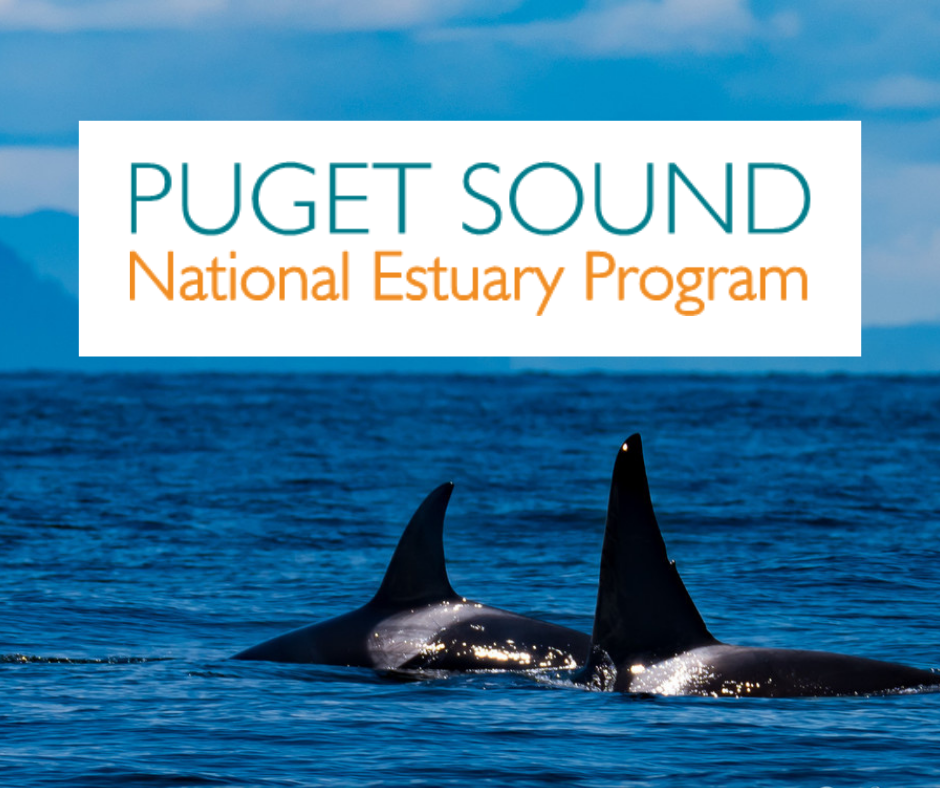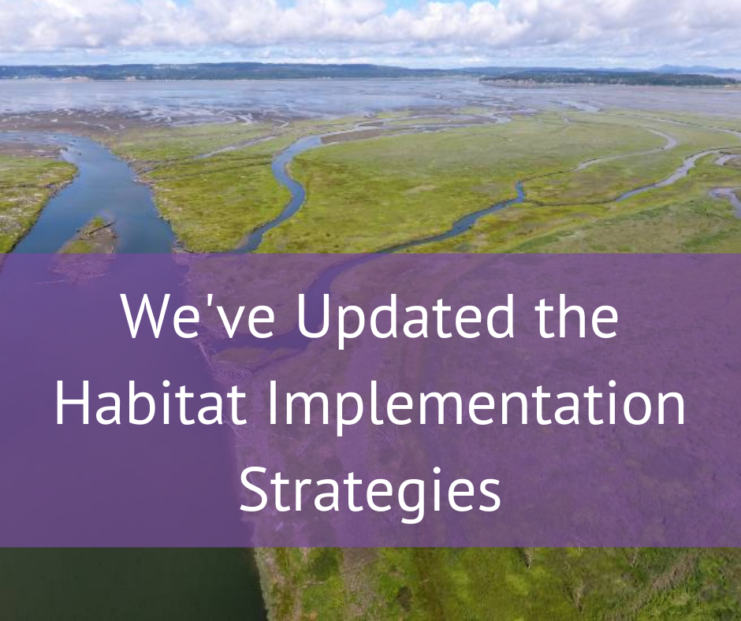The Habitat Strategic Initiative Lead is pleased to announce that all the Habitat Implementation Strategies’ narratives have been updated and are available through our website. The Narrative part of the strategies provide the core elements of the strategy in a classic narrative form. The Habitat Implementation Strategies include: Floodplains and Estuaries, Land Development and Cover, and Shoreline Armoring.
Implementation Strategies are plans for achieving specific ecosystem targets for the Puget Sound Vital Sign indicators. They describe the sequence of steps, activities, and results needed to move closer to recovery goals.
What We Did
Our goal was to ensure that the Habitat Implementation Strategies are well cohesive and mutually supportive, so that the content can guide coordinated recovery planning and implementation in Puget Sound.
Updates Common to All Habitat Implementation Strategies
- Narratives follow a standardized format and organization
- All required sections are either completed, or actions need for completion are recommended
- Implementation outcomes of the Habitat Strategic Initiative Lead team are described and incorporated, including Near Term Action investments and team capacity efforts

Floodplains and Estuaries Implementation Strategy
Floodplains and large river deltas are geographically linked and represent an ecological continuum. They also exist within a shared socio-economic context within each river watershed. To better highlight the interconnections across the ecological and planning processes for floodplains and estuaries, the Floodplains and Estuaries Implementation Strategy presents the critical issues and strategies that had previously been described separately – in the Floodplains Implementation Strategy (Partnership 2016) and the Estuaries Implementation Strategy (Partnership 2015). Combining these Implementation Strategies offered the opportunity to advance strategy coordination and better reflect the social-ecological system in which these habitats exist.

Land Development and Cover Implementation Strategy
The updated Land Development and Cover Implementation Strategy highlights the substantial momentum on the strategies made through Habitat Strategic Initiative Lead capacity efforts and IS Science Award Investments. The updated narrative also incorporates several Puget Sound Institute-led documents to provide greater context and detail to the existing strategy, and highlights the connections to the recently completed BIBI Implementation Strategy.

Shoreline Armoring Implementation Strategy
The Shoreline Armoring Implementation Strategy is the most-recently created of the three Habitat Implementation Strategies. The recent revision focused on providing updates on how the recovery community has achieved or advanced the priority near-term outcomes identified by the Interdisciplinary Team in 2018 for each strategy.
Looking Forward
Over the next few years, the Habitat Strategic Initiative Lead team will be working with new and existing partners to develop a plan for progressing these Implementation Strategies. We will work together, with experts, stakeholders, tribes, and Local Integrating Organizations, to improve our understanding of both the geographic specificity and sequencing of activities that will advance our shared recovery goals for Puget Sound.

Did you know?
The Habitat Strategic Initiative is one of three Strategic Initiatives (along with Shellfish and Stormwater) created by the U.S. Environmental Protection Agency. The Habitat Strategic Initiative Lead is co-led by the Washington Department of Fish and Wildlife and Washington Department of Natural Resources. The Habitat Strategic Initiative Lead is a planning and grant program advancing habitat protection and restoration as a part of the Puget Sound Estuary National Estuary Program. The Habitat Strategic Initiative is the Implementation Strategy lead for four of the Puget Sound Vital Signs: Estuaries, Floodplains, Land Cover and Development, and Shoreline Armoring, and will be the lead for scoping a potential new Implementation Strategy related to the new Marine Vegetation Vital Sign.

